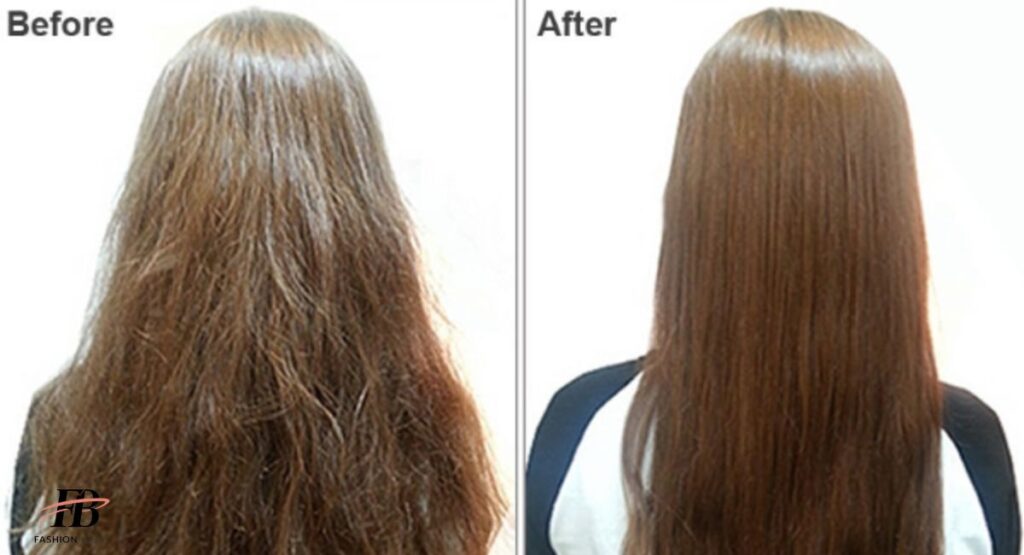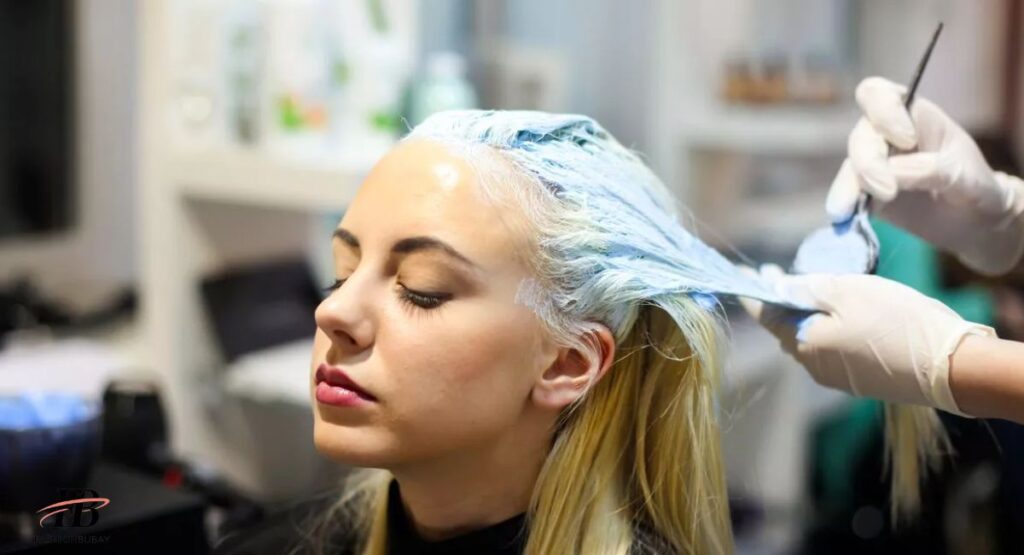Bigen hair dye is popular because it doesn’t contain ammonia or hydrogen peroxide. Despite this some worry it might cause hair loss. To understand this we need to look at its ingredients and their effects.
It contains para-phenylenediamine (PPD) which can cause allergic reactions in some people. These reactions may lead to scalp irritation and hair loss. Therefore individual sensitivity is an important factor to consider.
The health of your hair and scalp before using Bigen is also important. If your hair is already damaged you may experience more issues. Proper application and aftercare can help reduce the risk of hair loss.
Can Hair Dyes Cause Hair Loss ?
Hair dyes are a popular way to change hair color. However some worry they might cause hair loss. To understand this we need to examine the ingredients and their effects.
Many hair dyes contain chemicals like ammonia and peroxide. These can weaken hair strands and lead to breakage. As a result damaged hair might seem thinner over time.
Hair health before dyeing is also important. Pre-existing damage can make hair more vulnerable. Proper care during and after dyeing can help minimize hair loss risks.
Can Hair Dye Damage Your Hair?
Hair dye is a popular method for changing your look. However many people are concerned about whether it can damage their hair. To understand this it’s important to examine the ingredients and their effects.
Its often contain chemicals like ammonia and peroxide. These substances can weaken hair strands and cause dryness. Over time this may lead to breakage and split ends.
The health of your hair before dyeing is also crucial. Hair that is already damaged is more susceptible to further harm. Proper care during and after the dyeing process can help minimize the risk of damage.
Does Hair Dye Cause Hair Loss?

Hair dye is widely used for changing one’s appearance, but questions arise regarding its potential to cause hair loss. Understanding this concern necessitates an examination of the ingredients in hair dye and their implications for hair health.
Numerous hair dyes contain harsh chemicals like ammonia and peroxide which can weaken hair strands leading to breakage and thinning over time. Moreover consistent and prolonged use of hair dye may intensify these repercussions resulting in noticeable hair loss.
Side Effects of Hair Dye
Scalp Irritation: Some individuals may experience scalp irritation or allergic reactions to the chemicals present in hair dye formulations, leading to discomfort and inflammation.
Dryness and Frizziness: Hair dyes can strip the hair of its natural oils causing dryness and frizziness, particularly in those with already dry or damaged hair.
Hair Breakage: Harsh chemicals in hair dye such as ammonia and peroxide can weaken the hair shaft making it more prone to breakage split ends and overall brittleness.
Allergic Reactions: Certain ingredients in hair dye like para-phenylenediamine (PPD) can trigger allergic reactions in sensitive individuals resulting in symptoms ranging from mild itching to severe swelling and blistering.
Changes in Hair Texture: Regular use of hair dye may alter the texture of the hair making it feel rough or coarse, especially if the dyeing process involves lightening or bleaching the hair.
How Do I Safely Dye My Hair?

When it comes to dyeing your hair safely it is essential to prioritize the health of your hair. Begin by selecting a hair dye that suits your hair type and preferences considering factors like ammonia content and potential allergens.
For optimal results and minimal damage, consider seeking the expertise of a licensed hair stylist. They can offer personalized recommendations and ensure that the dyeing process is carried out safely and effectively. Additionally carefully follow the instructions provided with the dye, performing patch tests as necessary and thoroughly rinsing your hair after dyeing to maintain its health and vibrancy.
The Best Color-Safe Hair Products
When it comes to maintaining your hair color choosing the right products is essential. Look for shampoos and conditioners specifically designed for color-treated hair. These products are formulated to protect your hair color while providing nourishment and hydration.
In addition to using color-safe shampoos and conditioners consider incorporating leave-in treatments into your hair care routine. Leave-in treatments help to seal in moisture and protect your hair from environmental damage, preserving your color and keeping your locks looking vibrant and healthy.
Hair dye allergy treatment at home
Dealing with a hair dye allergy at home requires careful attention and prompt action. If you experience an allergic reaction start by rinsing your hair thoroughly with cool water to remove any remaining dye.
Next apply a cold compress or soothing lotion to alleviate itching and inflammation. Additionally taking an antihistamine can help reduce allergic symptoms such as itching and swelling. If symptoms persist or worsen, seek medical attention promptly for further treatment and advice.
How to calm down allergy to hair dye
Coping with an allergic reaction to hair dye requires prompt action to alleviate discomfort. Begin by rinsing the affected area with cool water to remove any residual dye and soothe irritated skin.
Follow up by applying a gentle soothing lotion or cream to calm inflammation and relieve itching. Over-the-counter antihistamines can also help reduce allergic symptoms like itching and swelling.
If the reaction persists or worsens it is essential to seek medical advice promptly. A healthcare professional can provide further treatment options and guidance tailored to your specific situation, ensuring effective relief from hair dye allergies.
cetirizine for hair dye allergy
Using cetirizine for a hair dye allergy can help alleviate symptoms effectively. If you experience itching or swelling after dyeing your hair, cetirizine can provide relief by blocking the effects of histamine the chemical responsible for allergic reactions.
It is essential to follow the recommended dosage and instructions provided by your healthcare provider or the medication packaging. Additionally if symptoms persist or worsen, it is crucial to seek medical advice for further evaluation and treatment.
Frequently Asked Question
Is Bigen hair color bad for your hair?
Bigen hair color is not inherently bad for your hair but it contains chemicals like para-phenylenediamine (PPD) which can cause allergic reactions in some individuals.
What is the Bigen hair dye lawsuit?
The Bigen hair dye lawsuit involves allegations of hair loss and scalp irritation caused by the product. Plaintiffs claim that Bigen’s hair dye formulations contain harmful chemicals leading to adverse reactions.
Is there a hair dye that doesn’t cause hair loss?
Yes, there are hair dyes formulated with gentler ingredients that minimize the risk of hair loss. Opting for ammonia-free or natural hair dyes can help maintain hair health while achieving your desired color.
What is the safest hair dye?
The safest hair dyes are typically those that are ammonia-free and free of harsh chemicals. Options like henna or vegetable-based dyes are known for being gentle on the hair and scalp.
Conclusion
While concerns about Bigen hair dye causing hair loss are valid it is essential to approach the issue with caution and awareness. While some individuals may experience adverse reactions such as scalp irritation or hair loss due to the chemical composition of certain hair dyes it is important to remember that reactions can vary greatly from person to person.
Ultimately the decision to use Bigen hair dye should be made after careful consideration of individual hair health sensitivity and preferences. Conducting a patch test prior to full application and consulting with a dermatologist or hair care professional can help mitigate potential risks. Additionally opting for ammonia-free or natural hair dye alternatives may be a safer choice for those concerned about hair loss or scalp irritation. By staying informed and taking necessary precautions individuals can enjoy experimenting with hair color while minimizing the risk of adverse effects.











